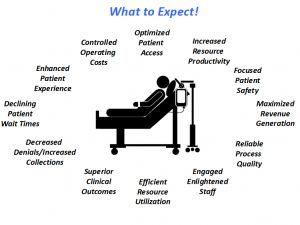Not A HIT
IT [Information Technology] use in the healthcare industry has experienced tremendous growth and attention since 2007. Yet concrete and credible evidence that HIT improves health outcomes remains inconclusive. Our investigation of New York State healthcare providers further indicates the healthcare industry may be experiencing an ongoing HIT productivity paradox, mirroring earlier patterns in manufacturing and other industrial sectors. While potential HIT contribution to health outcomes remains an open question, we suggest a collective approach is needed to address the many issues raised by the HIT productivity paradox and hope our research invites further inquiry into this important issue. Communications of the ACM, October 2018, The Productivity Paradox in Health Information Technology. Image: group50.com
I learned about this productivity paradox at the Software Engineering Institute. It was a revelation that helped me remain patient and less frustrated on future efforts. The simple, now obvious, fact that when we do something new we will not necessarily be as productive as we had been in the past is an incredible insight. There are ways to minimize productivity reduction during the early use phase, but it almost always happens. There are times when using a new technique or technology that one’s productivity skyrockets. When I first used a Palm Pilot and when I tried Quicken financial software, I was more productive than previously with each keystroke. These techniques or technologies embody a deep understanding of how an individual works, or at least of some individuals who then immediately resonate with the new approach.
The other issue mentioned here was, that beyond productivity, did the new technology ultimately result in improved health outcomes. Google has pushed speed for websites, citing studies showing that speed maintained engagement by customers which resulted in higher revenue (at least for their ads, I suspect). Some productivity enhancements just allow us to do the same job faster and more accurately, without necessarily being more profitable or health enhancing as covered in this article. This is almost always a good place to be except in the rarer circumstance where over automating a bad process just made that process harder to improve later (I think of Tesla’s manufacturing line tents after robot automation did not live up to expectations). Once we got good at what we did, in my experience, the easier it was to improve how we executed a project and then delivered more functionality, with higher quality, and on time and at or below our estimated cost.
Are you accounting for the temporary productivity drop in your improvement project?
